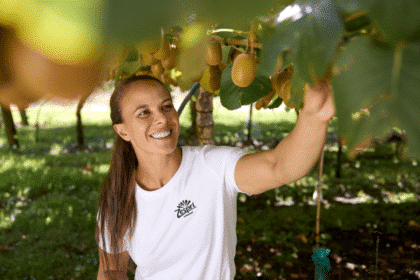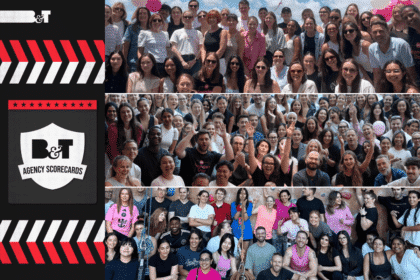Anna Validas, CEO of Convenience Advertising, shares her insights into the relationship between these critical elements in this Q&A. A specialist in the bathroom advertising channel, Anna has led the Convenience Advertising team since 2012.

The COVID-19 pandemic put the effectiveness of public health campaigns firmly in the spotlight. What lessons did you learn?
We worked with Dr Shaun Ratcliff, a political scientist at the University of Sydney, to analyse the effectiveness of government COVID-19 public health information and behaviour change campaigns. The results were a real eye opener.
Across all the government COVID-19 campaigns delivered through Convenience Advertising channels in Melbourne, Sydney and Brisbane, more than half of respondents remembered seeing the advertising assets, of whom 89 per cent recalled the content of the advertising message without any form of prompting.
Importantly, nearly half (48 per cent) said they’d changed their behaviour in regard to hand hygiene, mask-wearing or social distancing based on the information they received in those bathroom advertisements.
This sort of clear, measurable behaviour change is the gold standard metric for public health campaigns. It was a critical outcome for our government clients in successfully delivering important COVID-safe messaging. These results can’t be achieved without quality audience dwell time in front of fixed advertisement panels, within the natural line of sight.
DonateLife achieved similar results. Our data-driven approach showed how well QR codes perform in bathrooms, where people can engage with them in private. The engagement data has been tracked by date, time, gender and state and the results have been incredible.
As a direct result of the Convenience Advertising campaign, over 4,700 people have registered to become an organ and tissue donor. A further 27,000 people have scanned the QR codes to seek information about becoming a donor. That’s huge.
How did data insights shape the delivery of the COVID-19 public health campaigns?
CaptiVision’s audience measurement tool was critical in understanding the potential risks of COVID-19 transmission based on audience attendance in the venues where the digital screens are installed.
Once we came out of the first national lockdown in early June 2020, CaptiVision was able to tell us that people movement in and out of the bathrooms in Melbourne’s west and north-western suburbs increased considerably compared to those in the east and south east.
It pointed to stronger caution shown by members of the communities in the east, which intrigued us, so we immersed ourselves in the data to see how we could tailor messaging on a postcode level.
We drilled down into the demographics of shopping centre visitors in culturally diverse suburbs such as Sunshine and Broadmeadows, and were able to recommend CALD hybrid messaging appropriate for each postcode for COVID campaigns.
People in these communities have lower English proficiency and their household internet access is limited, often driving greater attendance to their local shopping centre to access free Wi-Fi and for entertainment purposes.
Our government clients used these data insights to further sharpen their CALD messaging on a localised level and we ended up delivering COVID-safe messaging in 18 languages. It was highly effective in terms of both recall and reported behaviour change measures.
What’s the latest evidence telling us about how we, the advertising industry, can deliver even more impactful campaigns for our clients?
New research released by the Advertising Council of Australia shows the business impact of marketing campaign investment increases by nearly two thirds (65 per cent) when strong creative is placed on a high attention media platform. High attention media channels were found to supercharge the effectiveness of strong creative by up to 75 per cent.
The report recommends that marketers and media buyers should prioritise attention over reach, complementing earlier OMD research into the importance of active attention to ensure a brand is at the forefront of their audience’s mind in buying or information consumption situations.
The lessons are twofold: 1) active attention is a decisive factor positively influencing ad recall and behaviour change and 2) choosing a high attention media platform is a major factor in determining the effectiveness of a marketing campaign.
Which media channels deliver the holy grail of active attention?
With competition for audience attention at an all-time high, driven by continuous technology changes and a highly fragmented media landscape, one thing has remained constant: humans’ need to visit the bathroom. We know over three quarters of airport terminal visits and 35 per cent of shopping centre visits include a trip to the bathroom.
Bathroom media channels provide a unique platform to deliver messages to a specific audience, at a time when their mind is in a receptive state in a private environment. Messages are delivered in the direct line of sight without distractions. With audience attention averaging two minutes, it’s a powerful messaging medium.
The ability to capture the active attention of a specific audience is a major reason why bathroom media channels deliver such a proven return on investment. This will become even more important if advertising budgets tighten due to economic uncertainty or a potential future recession.
Find out how Convenience Advertising can help you capture the active attention of the audience you want to reach:
- Visit the Convenience Advertising website
- Contact Nitin Mascarenhas
Further Reading:
- Advertising Council of Australia (2023) Attention and Effectiveness: To ESOV and Beyond Part II.
- Available on request from Convenience Advertising 03 9486 0233:
- Ratcliff, Shaun (2021). COVID-19 Narrowcast Messaging Research Study, Final Report.
- Convenience Advertising (2022) In-field research on venue visitor numbers.









